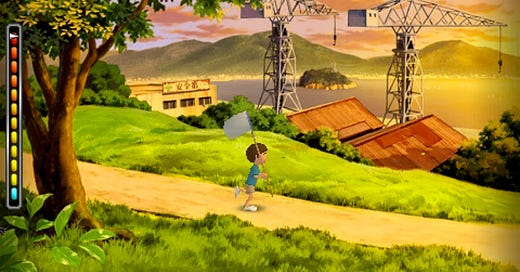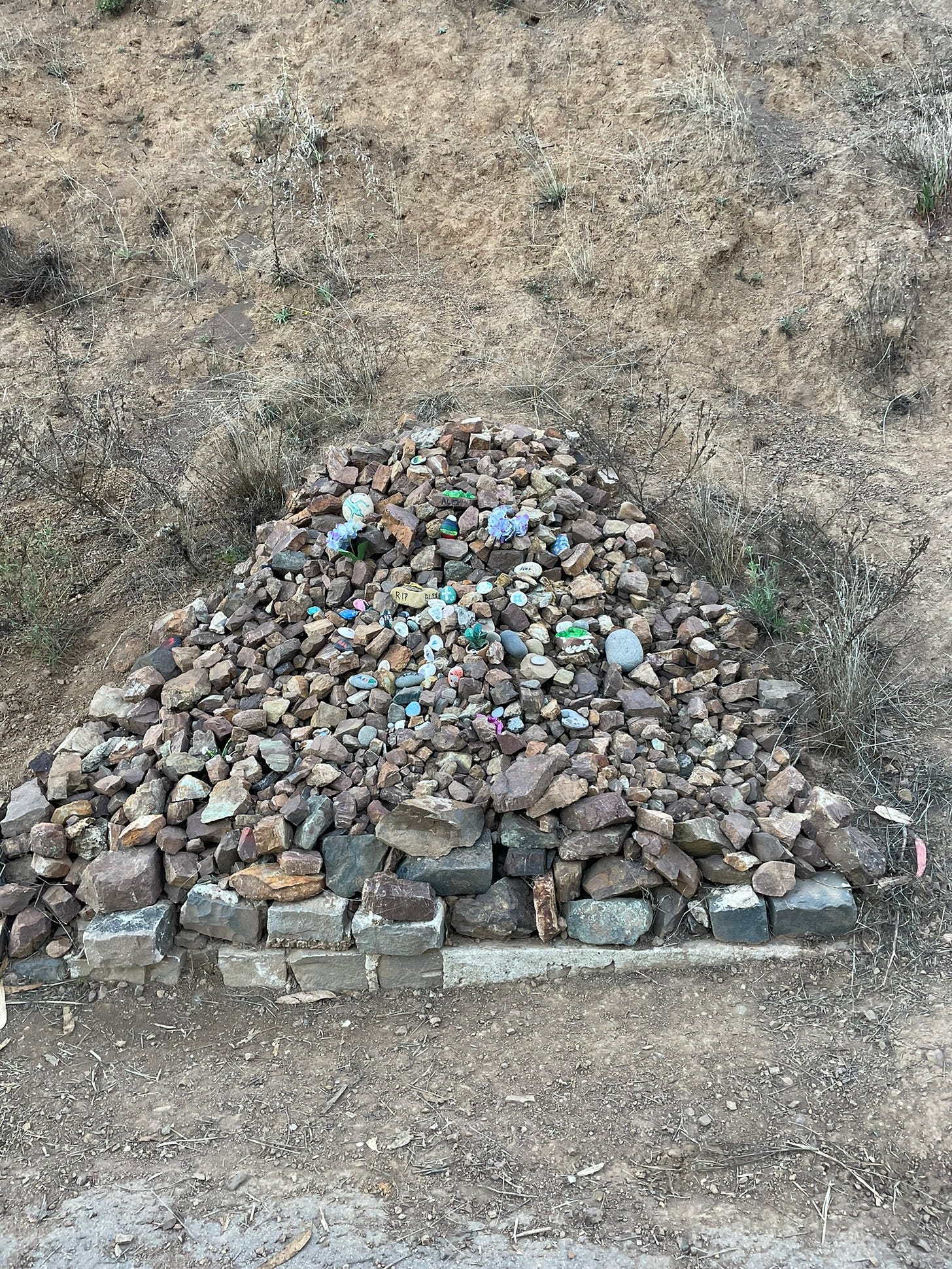I like newsletters that feel more like dispatches than editorialized posts. Inspired by Laurel and Robin, I’d like to share a little bit about where I am and where I’ve been lately. I write this from Atlas Cafe, a wonderfully cozy cafe near me I like to escape to when my desk starts to feel laden with expectation every once in a while. It’s been hard lately, to be honest. I wrote last time about reaffirming your choices, even and especially when it’s hard. And I’ve been trying to take my own advice, but I still feel a bit lost, perhaps more so than any moment before in this independent research arc. Still, I find immense joy in the most unexpected places and the people who always support me. The world manages to find a way to strike you with the most indescribable beauty when you need it most.
There’s been a rising trend in the software world to imagine that the future of software is video games. For example, Not Boring Software is a company that recreates the standard phone apps from a game-first perspective: 3D designs, meticulous attention to interaction detail, and paired soundtracks. New real-time syncing libraries like Partykit (and my inspired creation playhtml) are making it incredibly easy to make websites multiplayer, which many games incorporate as the default. This prediction is wise in a lot of ways in terms of interaction, narrative, tutorial, and multiplayer design, and more and more people desire a liveness and tactility in websites that we take for granted in video games.
However, today I want to turn the prediction on its head to make another hypothesis:
Websites are the future of video games.
They are the “end game” of video games. They are spaces where the end players (the website visitors) have the agency to freely interact with others, and not towards any predetermined object, but purely for themselves, discovering who they are in each new environment and finding new ways of relating to one another.
The past few weeks I’ve watched several of Tim Rogers’ video game reviews on his channel Action Button.
To dismiss these reviews as merely “video game reviews” would betray the amount of depth, range, and relevance of these cultural artifacts. These “critiques,” as I’ll refer to them, each focus on a single video game deemed to be “seminal” in some way to the history of video games and run for no less than 5 hours (with the longest coming in at 8+ hours in total). Rogers starts his analysis before the video game, dissecting the existing video game landscape, the studio and designers that created it, and the broader social context, to chart a trail through what kind of impact it has and what it demonstrates as an object of media.
two games that Action Button has reviewed (top) screenshot from Doom and (bottom) screenshot from Boku No Natsuyasumi
In his review of Doom, the famous 1993 demon-slaying game attributed with inventing the “first-person shooter” genre and is famous for being ported to ridiculous modern devices like smart fridges, graphing calculators, and even an ATM, Rogers recalls a single wistful line from an obscure game magazine review of Doom around when it first came out: “if only we could have talked to those creatures.” This line is what Rogers chases throughout the rest of his “season” of reviews. One of his favorites is a review of Tokimeki Memorial, a Japanese game from 1994 that popularized the “dating-sim.” The game allows you to relive high school as a teenage boy who encounters several girls that he has the option to get to know. Each character has their own personality, and you’re given several dialogue choices that affect their impression of you. Rather than creatures that are the same every time you see them, Tokimeki Memorial gives the impression where your agency comes into conflict with several others’, each with their own desires and personalities. At the end of this season, he concludes that more video games should ditch combat mechanics and instead focus on how your choice of actions question and ultimately shape who you are and what you care about.
As I watch Tim talk about all this, I think about how websites feel like multiplayer video games, all of which are part of the broader “internet” universe. One in which the “creatures” are the cursors of other, real people. And where we can’t fight each other at all, only talk to one another.
from https://twitter.com/spencerc99/status/1675545840319070210
Somewhere in the push to make the internet the infrastructure of a global capitalist economy, we lost this perspective on what the internet is. If I asked people to define what websites are to them, they might talk about the capabilities they provide: “the world’s information at your fingertips,” “AI that does whatever you ask of it,” “a platform for selling products.” Or as design artifacts: they provide the basis of interactive, creative pieces of art, media, and writing.
But if we distill a website down to its base components, it is a space that allows people to talk to each other. In the era when the internet was new and before we had predetermined what it was “for,” everyday internet pioneers found ways to talk to one another by making websites for each other. The conversations spanned webs of personal websites, revealing intimate detail in exchange for intimate detail. They bartered histories for kinship, stories for solidarity, identities for community.
The websites of our modern-day internet experience reflect quite a different perspective on what websites should be “for.” Websites are often the expression of a corporate unit, optimized for flow, retention, or the latest trendy design aesthetic. We focus on animation design and gradient layering rather than the interactions that govern how we relate to one another.
a living memorial for Alex Nieto, a local killed by SFPD in 2014 with rocks and flowers from neighbors
To embrace “websites are the future of video games,” we must turn our focus over to how we can evolve the modern aesthetic of websites. How do we make websites feel more like embodied objects? What does a website that can become well-worn or passed down feel like? How does a website become a living gathering space, one that evolves with the activity of its participants? How can a website enable showing care to each other? How can it facilitate solidarity between people?
Rather than solely looking towards video games for inspiration here, we should draw from the decades of activity, community-making, and self-documentation that have been conducted on the internet and question how we can enable new ways for people to relate to one another, drawing on the decades of multiplayer environment design that video games have pioneered.
With lightness, Spencer
some lingering extra thoughts…
I originally discovered this channel through his most recent video, a review of a Japanese game called “Boku No Natsuyasumi” (ぼくのなつやすみ), “My Summer Vacation” in English. The game is about a Japanese boy from the big city who goes to their family’s countryside home for their summer vacation. You play as the boy, Boku (yes the main character’s name also means “I” in Japanese), and decide what he does for each day of his vacation, slowly uncovering the hidden wonders of the countryside and the family’s untold history. No particular “objective” is given, and the player is given free agency to spend the vacation in the way that most appeals to them. In the end, the player’s actions lead to several possible scenarios of the player’s future 25 years later.
You should go watch the whole review (although I’d watch it sped up and split it up into multiple parts like a mini docu-series), but I’ll recount the particularly relevant moments here. The game calls you out for achieving a perfect “score” in the game. If you try to do everything, optimize for completing every part of the game (which requires that you have tried and failed before in order to use knowledge gained from the failure for the perfect run on a redo), you are called a liar by the game. The “best” scenario happens if you only achieve 60-70% of the game. In essence, it rewards you for being true to yourself.
The game critiques “completionist” mindsets that modern video games encourage. People want to achieve 100% and will optimize their way into the best build you can create. In big video games, expansions have to be continually created that create ever-increasing power creeps in order to keep things interesting. If you can race in the game, then the race will be one to the bottom. To escape this prophecy of expectation, we have to be encouraged to find new ways of measuring time and progress.
As video games have shifted towards hyper-optimization, the internet has gone a similar direction. Friction has been systematically eliminated and sophisticated automated experimentation infrastructure enables optimization of key metrics at a microscopic level of detail. In return, we’ve come to view websites and the broader internet more and more as a purely utilitarian medium. Even social media, which at some point was positioned as something for self-expression and community-making has become almost entirely a space for influence climbing.
What websites and apps reward us for doing 60% of all the things that they offer? We need more websites that gently guide us to trust our own choices and intuitions, that chide us when we try to do it all and work ourselves to the bone, that nudge us to find beauty in unexpected places, to find the poetry in the lazy.
Thank you for everyone who is reading this, and welcome to all the new folks (now 530 of you!!). If you’d like to support my independent work, I’d appreciate if you shared anything I’ve made that resonates with someone who you think would enjoy it (and I also have a sponsors page for people to support my independent work and get inside scoops)!








